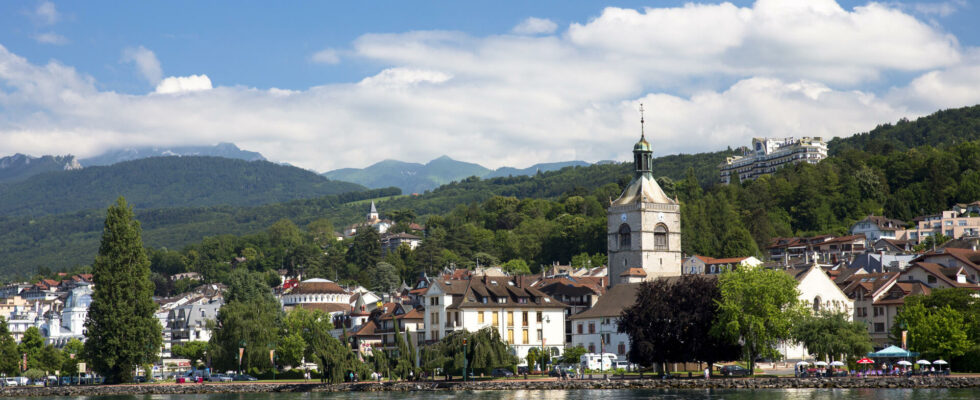Recovered time. Since Marcel Proust liked to stay there in his “great desire to see the beautiful lake again” Léman, the title of his novel could be the slogan for the coming months in Evian-les-Bains. The city, which is reconnecting with its Belle Epoque past, will soon unveil two of its jewels, the casino then the Cachat refreshment bar, memories of the golden age of hydrotherapy when, at the turn of the 20the century, crowned heads and deep wallets settled here for a season of summer and social life. Sometimes forgotten, this Art Nouveau heritage is coming back into favor: “Until the 1990s, it was considered minor, too kitsch. It was only in the 2000s that we became aware of its value”underlines Françoise Breuillaud-Sottas, the passionate historian who recounts the great times of Evian.
A few steps from the church, facing the lake, a Byzantine basilica dome tops a silhouette of Hagia Sophia. Since 1911, it has housed the casino, to which restoration work will restore its elegance in June. The red neon sign, looking like a poor man’s Las Vegas, was replaced by white letters set into the glass roof under which an entirely glass facade now undulates.
The interior has been freed from the decoration masking the dome and stained glass windows, the friezes painted by Gustave Louis Jaulmes (1873-1959) have found the gold leaf which highlights the intersecting arches and magnifies the space. “An architecture of sensation, deep and soothing, powerful without being oppressive”salutes Philippe Prost, the architect who, at the request of the owner, the Danone group, restored its luster to the work of Jean-Albert Hébrard (1866-1942), author of several Art Nouveau jewels in the city of water.
Later, Philippe Prost would remodel the small theater from 1885, which a gallery connects to the casino. Behind its staircase and neoclassical pilasters, the Italian-style room bears the names of nations on the ceiling (Russia, Italy, England, Switzerland) where the foreign customers came from. Most took the train that Alfred André – the president of the Evian Mineral Water Company, who was also a director of the PLM railway company (for Paris-Lyon-Mediterranean) – had brought there from the capital.
Palace of eclecticism
We imagine the elegance of the lakefront before a recent building interrupts it between the theater and the imposing villa of Antoine Lumière, father of Auguste and Louis, and zealous salesman of their photographic and then cinematographic inventions. A year after filming the Lumière brothers’ first film in Lyon (1895), he bought this classic residence, modified the plans to make it a palace of eclecticism: a replica of Michelangelo’s thinker on the vast terrace overlooking Lake Geneva, copy of two Atlanteans by Pierre Puget (XVIIe century) framing the entrance door clad in bronze bas-reliefs, majestic interior staircase at the foot of which stretches the sculpture of a lioness, onyx fireplace and tables, stained glass windows, frescoes… This rococo opulence is now accessible to all since it houses the town hall. While Antoine Lumière painted his landscape frescoes, his sons immortalized the boats on the lake, the embarkation of ladies in long dresses.
You have 59.68% of this article left to read. The rest is reserved for subscribers.
